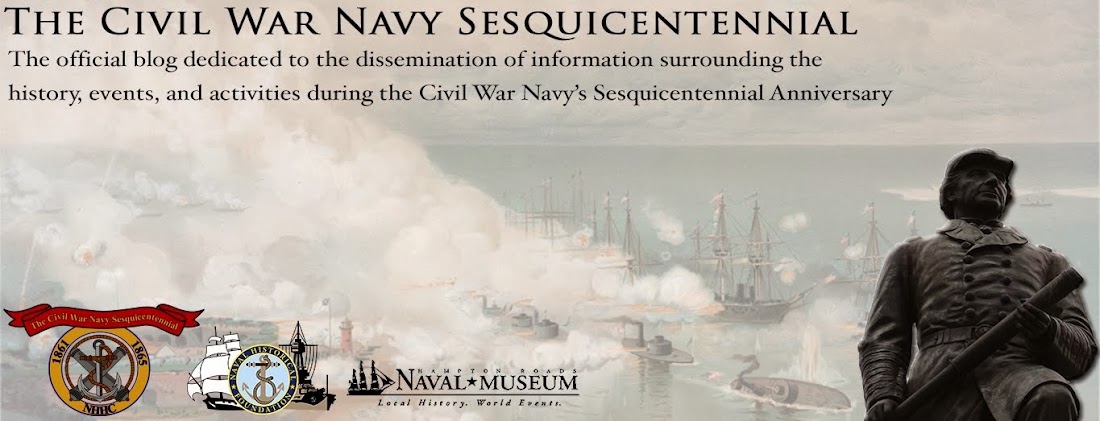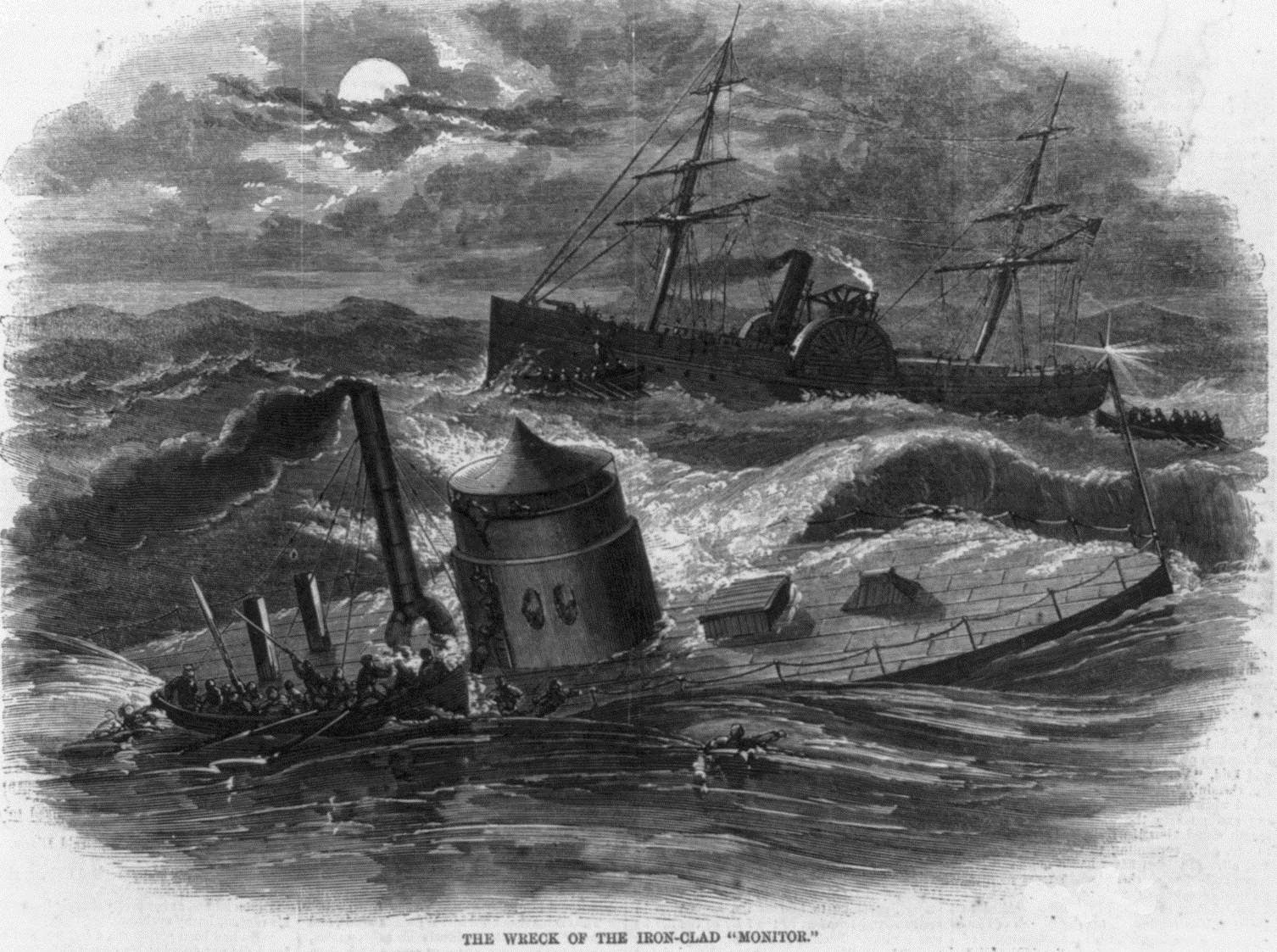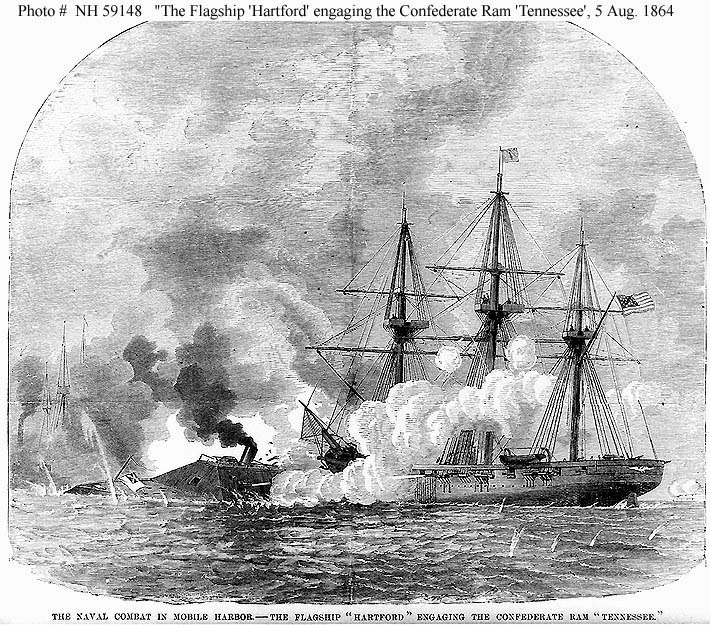By Matthew T. Eng
Naval Historical Foundation
We are closing another calendar year on the Civil War Sesquicentennial. It is the last December of the war years. Civil War naval enthusiasts will note the importance of today’s date across the landscape of the social media blogosphere: the 31 December sinking of USS Monitor.
Naval Historical Foundation
We are closing another calendar year on the Civil War Sesquicentennial. It is the last December of the war years. Civil War naval enthusiasts will note the importance of today’s date across the landscape of the social media blogosphere: the 31 December sinking of USS Monitor.
Monitor put to sea
under tow from USS Rhode Island on
the final days of 1862. A violent storm soon developed off Hatteras, forcing Monitor’s Commanding Officer John P.
Bankhead to signal a red lantern to the crew of Rhode Island for help. The lamp
hung with the running lights on the turret, the highest point of the vertically
challenged vessel. By the time the Monitor
survivors arrived safely on board Rhode
Island, their beloved ship began to pitch and roll under the strain of the
sea. Sailors recall seeing the red light atop of the turret flickering in and
out in the distance as they began to break off. By 1:00 AM on 31 December 1862,
the red light was underneath the turbulent waves.
“We watched from the deck of the Rhode Island the lonely light upon the Monitor's turret – a hundred times we thought it had gone forever, – a hundred times it reappeared, till at last...it sank and we saw it no more."- Surgeon Samuel Gilbert Webber (USS Rhode Island)
The red lantern and several other important artifacts from
the ironclad are back on the surface. Resting underneath the waves are the
remains of the ship and the bodies of fourteen sailors. Two of their comrades
discovered inside the recovered turret now rest in Arlington National Cemetery.
Such A Heavenly Way to Die?
Significant dates are a tricky form of understanding
history, especially in today’s social media-centric society. Anybody can write
down or post about WHEN something happened in naval history. Maybe a few
historical photos will accompany the brief text. You may “like” it on Facebook.
Hell, you may even share it on your wall or tweet it to your followers. But the
learning stops there. The dialog dies. We can’t afford to do that when there is
so much more to talk about, especially Monitor.
It takes talent to convey to others WHY and HOW it happened.
Most stewards of the craft are simply telling you when
something happened in the grand timeline of naval history. Fort Fisher falls in
January. Mobile Bay was an early August event. The Battle of Hampton Roads is
celebrated for two days every March. So much more happens in between a calendar
year and a time and place. Merely telling the general public about a
significant date in history seems like an empty gesture. The public demands and
deserves more. Thanks to a dedicated group of historians, museum specialists,
curators, and underwater archaeologists, we continue to learn more about
America’s first ironclad every day.
History in the
Darkened Underpass
It’s been a tough set of years to mark the current Civil War
commemoration. Anyone who tells you differently has not paid close attention to
the pulse of the general public. Controversy is a yearly event.
A centennial seems like a nice round number – one that is
easily recognizable to the general public. World War I fans are currently
reaping the benefits of this in the same way the public honored the recent War
of 1812 bicentennial. Looking back at 150 years is more difficult. These years
mark the halfway point on the road trip to the bicentennial. It is as if the
public is sitting in the back seat of the car, asking leading historians,
museum specialists, and authors “are we there yet?” We are there. In fact,
there is less than 150 days left in the entire sesquicentennial commemoration.
How will it fair during the 175th in 2036?
Monitor was not
immune to this harsh criticism in the wake of the Conservation Lab’s closure. The
year for Monitor began on 9 January with
news from the Washington Post that
the USS Monitor lab would close its
doors due to a lack of federal funding. The news shocked everyone, in and out
of the field. Many of the comments posted on the Post article were anything but helpful. Many questioned why we
support such aged history in the first place. Supporters of Monitor soon came to their aid when
funding proved short, calling for others to help preserve the lab and
artifacts. Thankfully, the lab reopened only a few months later this summer. Monitor was back, and the interest
continued to grow.
 |
|
The Monitor
Center Reopens (Adrin Snider / Daily Press)
|
That interest stayed at this year’s 10th Maritime
Heritage Conference in Norfolk, Virginia. A special panel shed light on the
recent efforts and partnerships between the Mariners’ Museum, Monitor Conservation Lab, and NOAA.
Leading experts on the ship spoke positively about the future of the artifacts.
I had a chance to write a nice piece about some of their more recent artifact
conversation projects. The sea state was calm. The subject of Monitor and shipwreck history even came
up at this year’s World War I Centennial Conference at the MacArthur Memorial.
There is so much more to the mystery of Monitor
than a single date in time.
It would seem that the red lantern, which became a central
artifact in the discussion of the Monitor’s recovery, is still on. Dave Krop
and the fine folks at the lab are still doing the diligent work necessary to
preserve one of the Civil War’s most treasured relics.
Monitor is a
figurehead of American naval history. One may argue the ship’s supreme
importance within the timeline of naval history in general. Monitor is WHY and
HOW Civil War naval history is alive and well today. Such an important ship
deserves our respect and admiration.
“Well, the pleasure – the privilege is mine” to continue to
work with those who would see the red light never extinguished from the memory
of Monitor. Thank you to all who keep
it lit.











